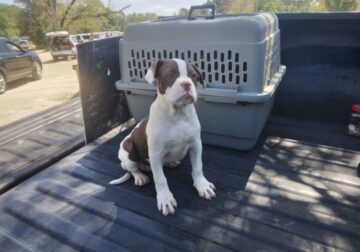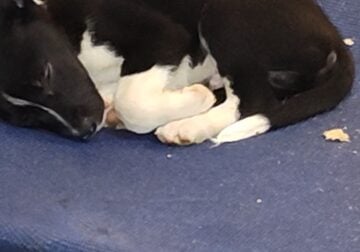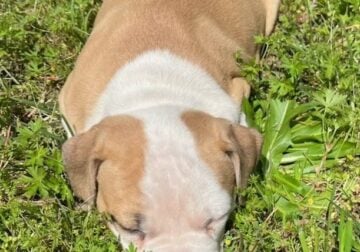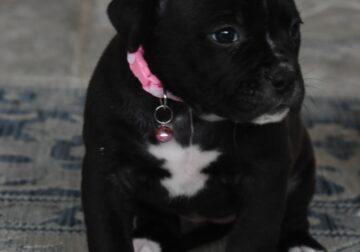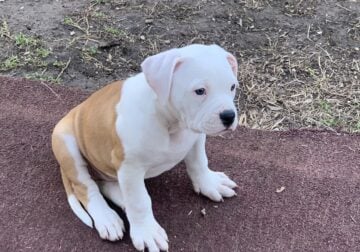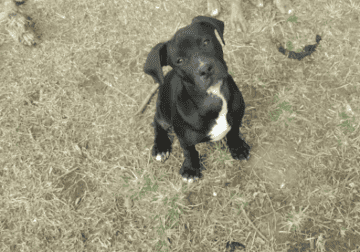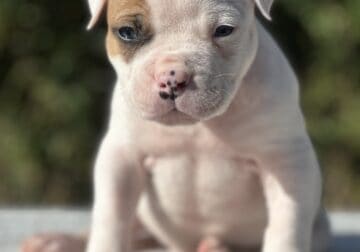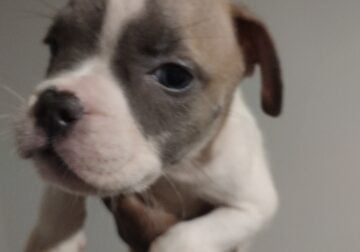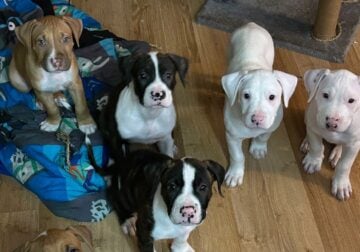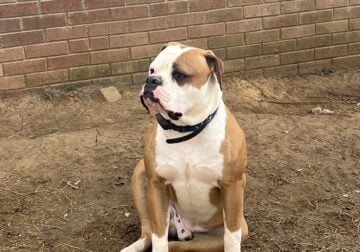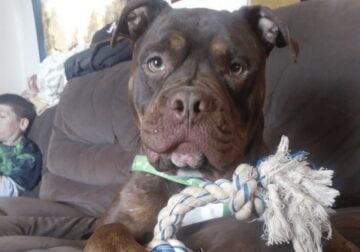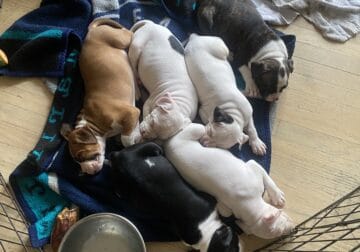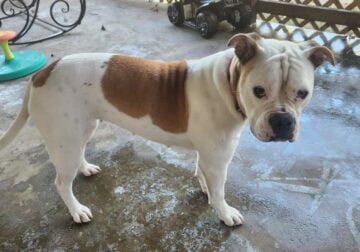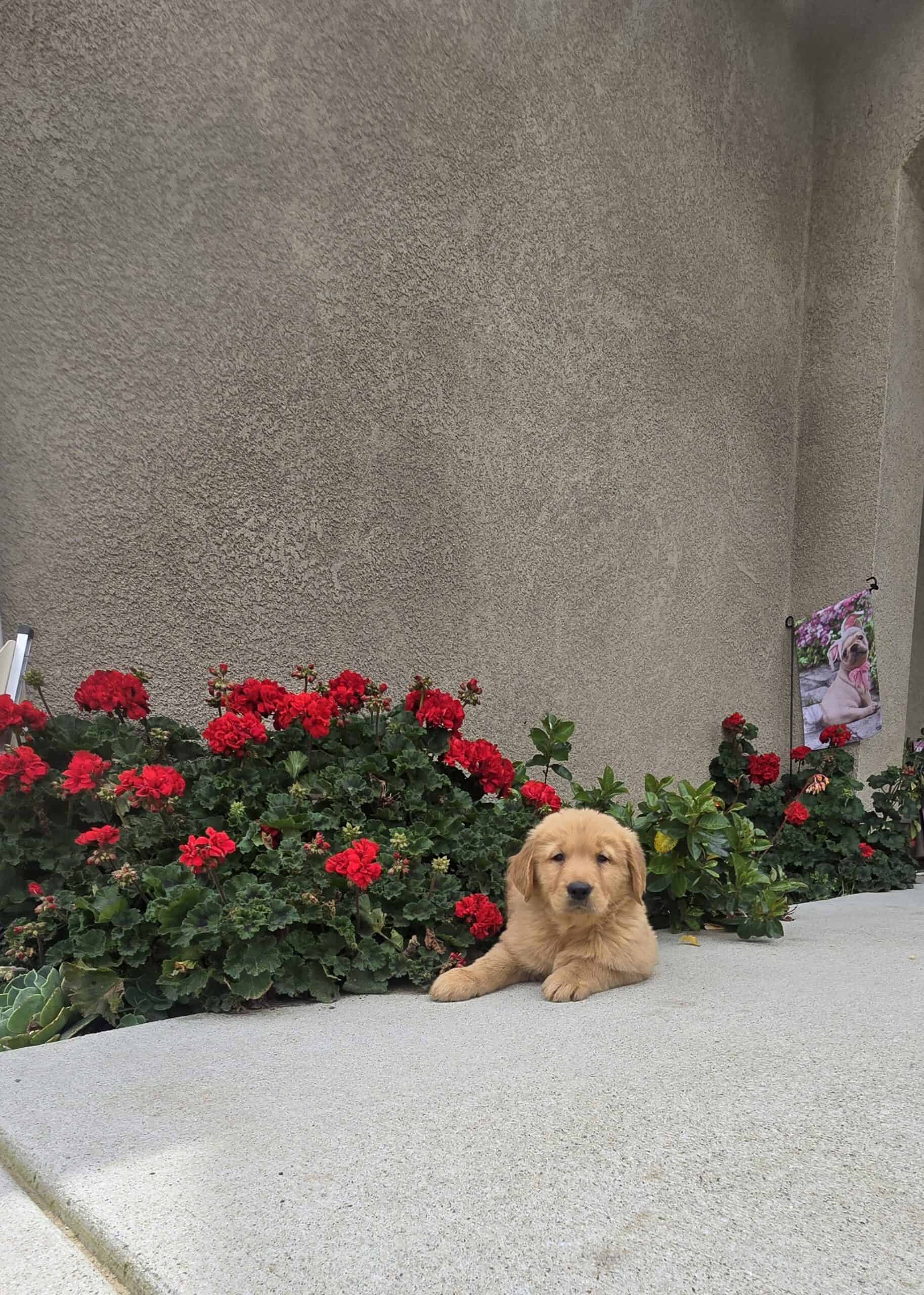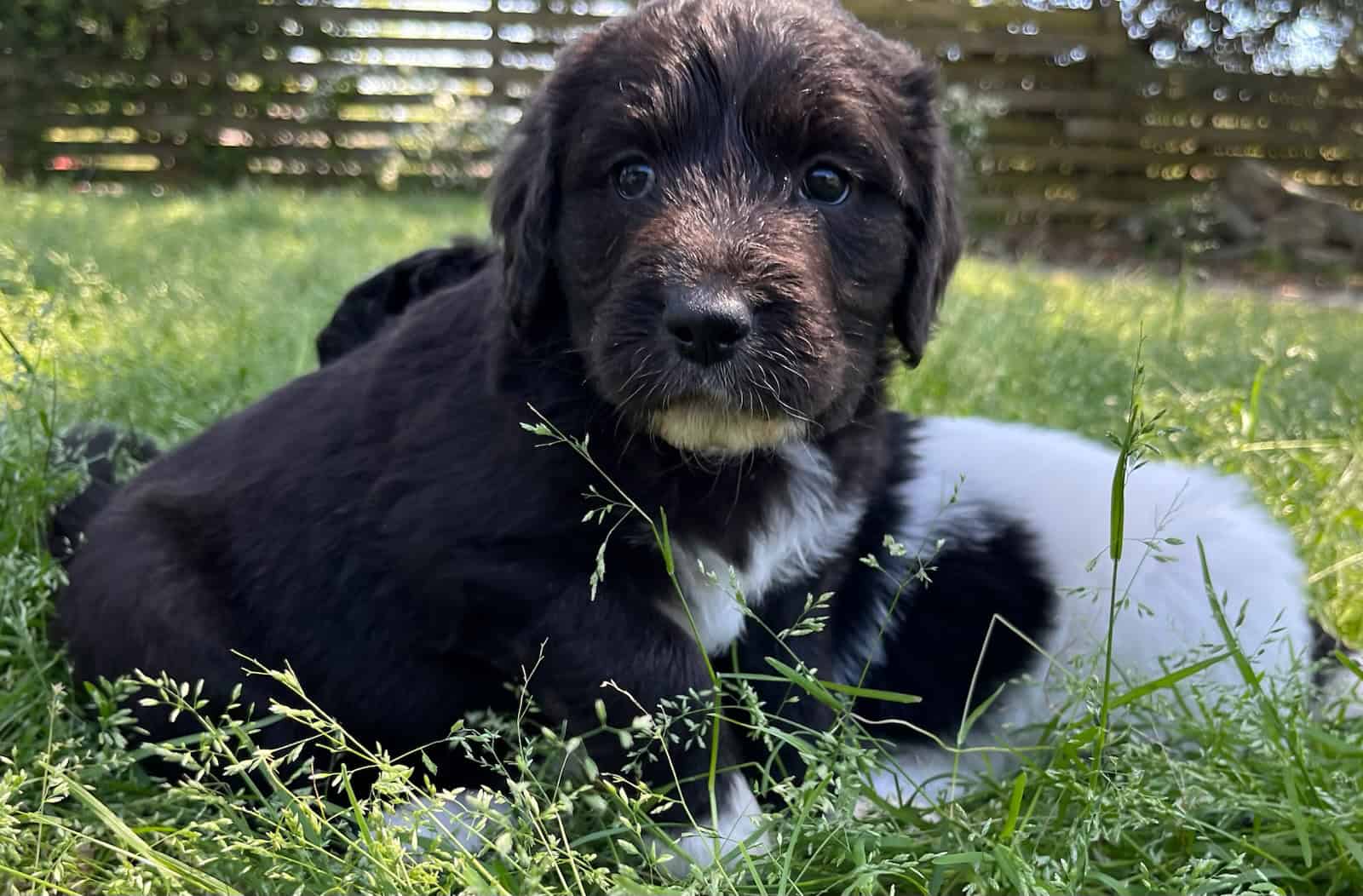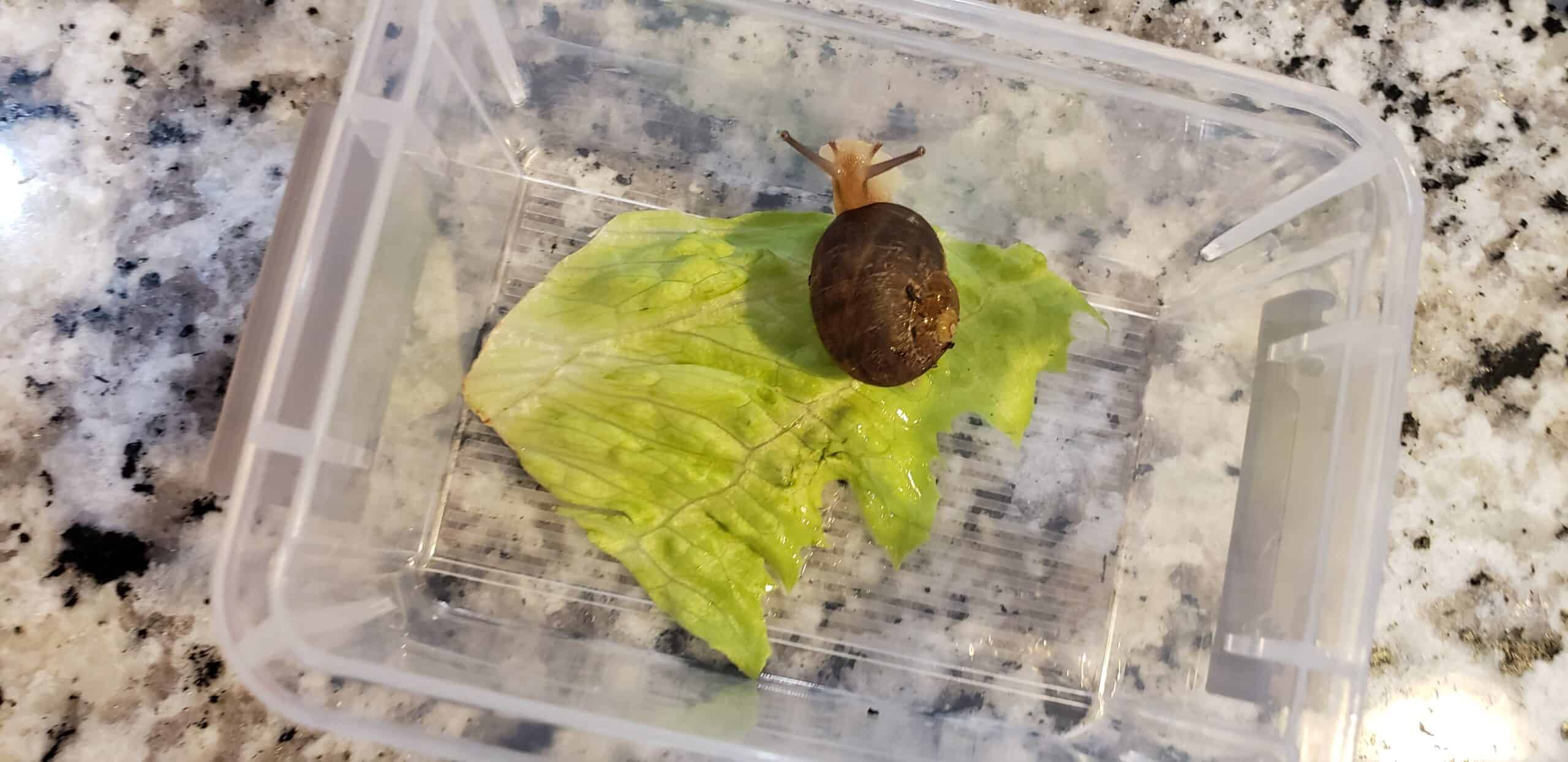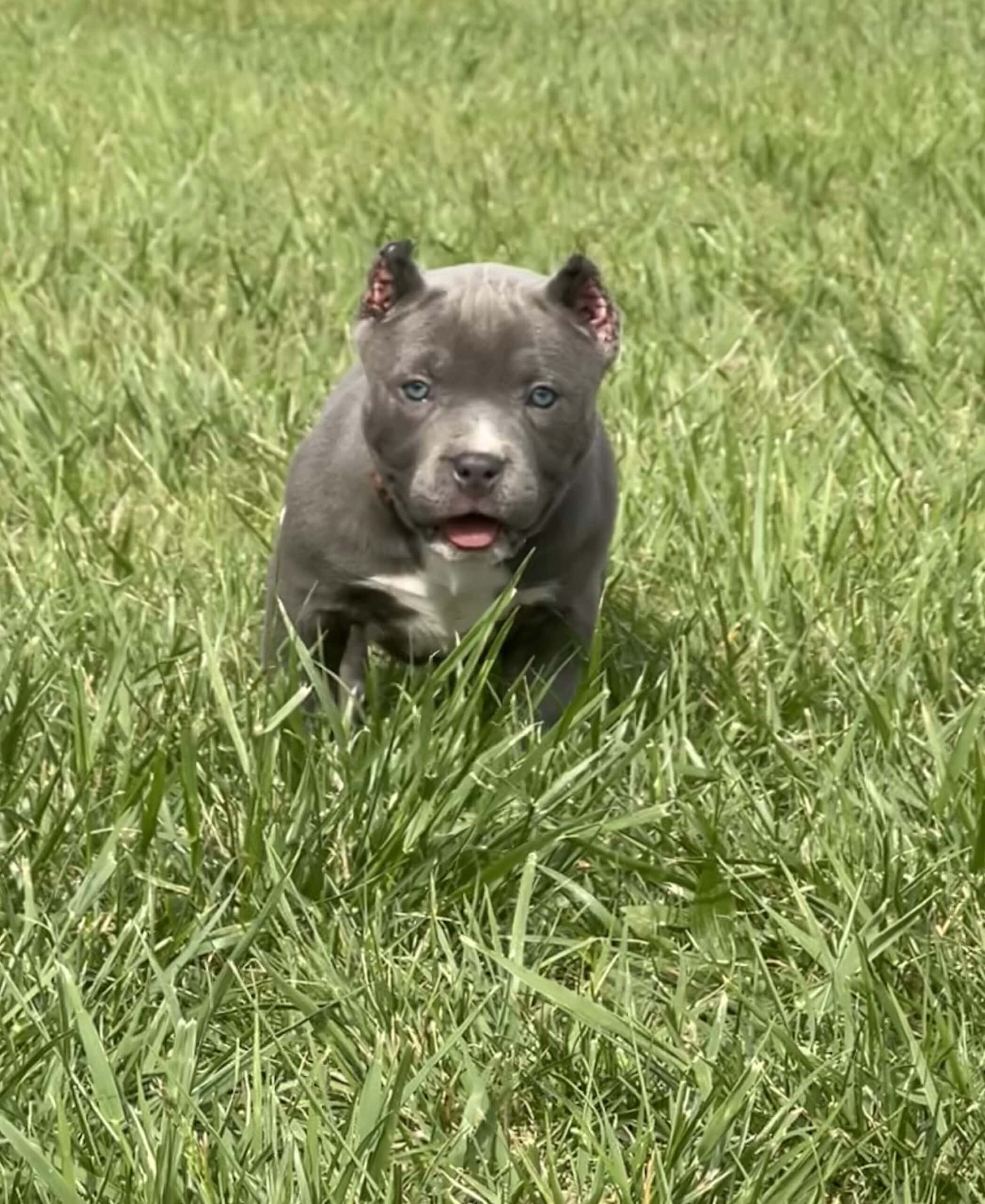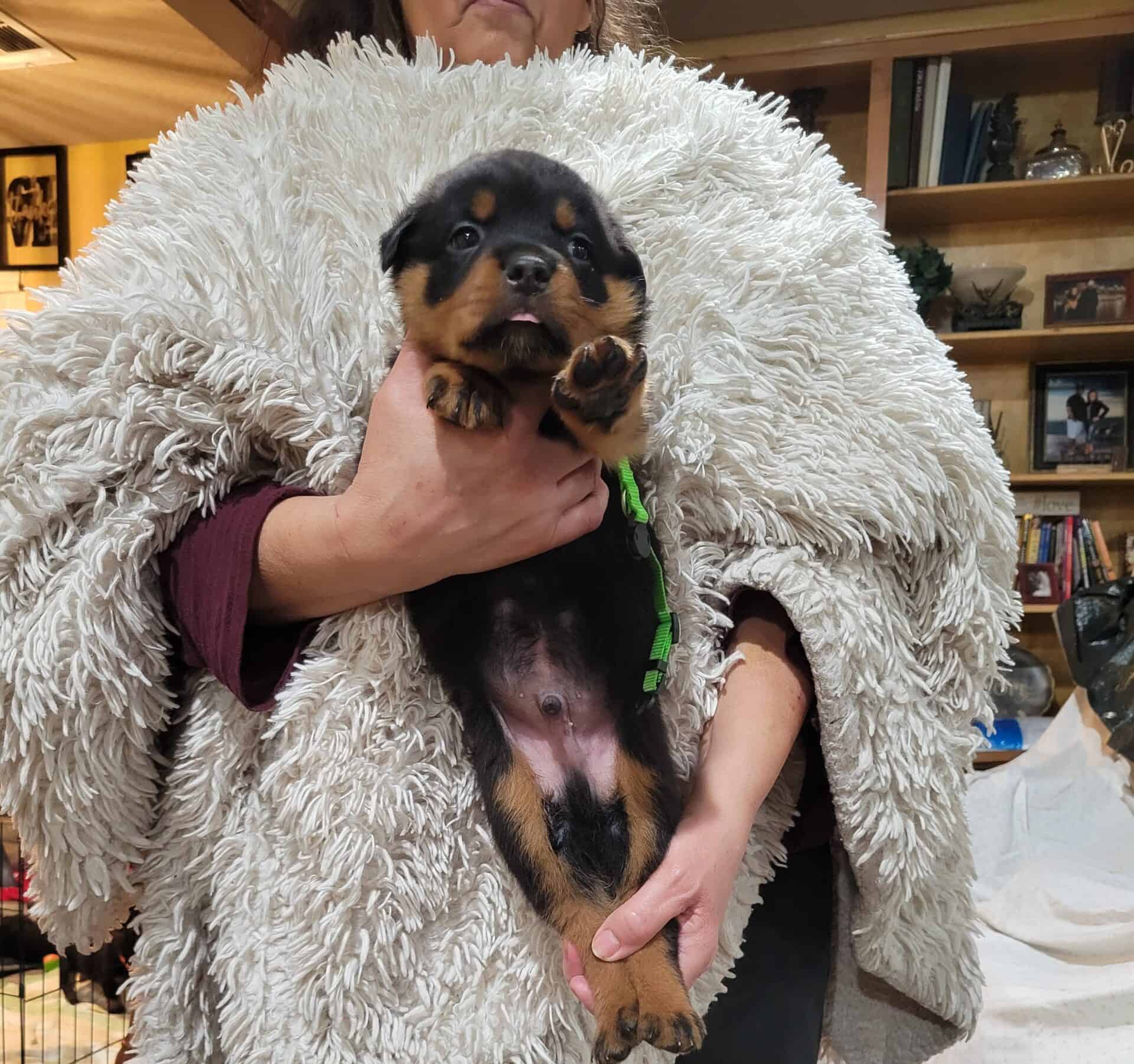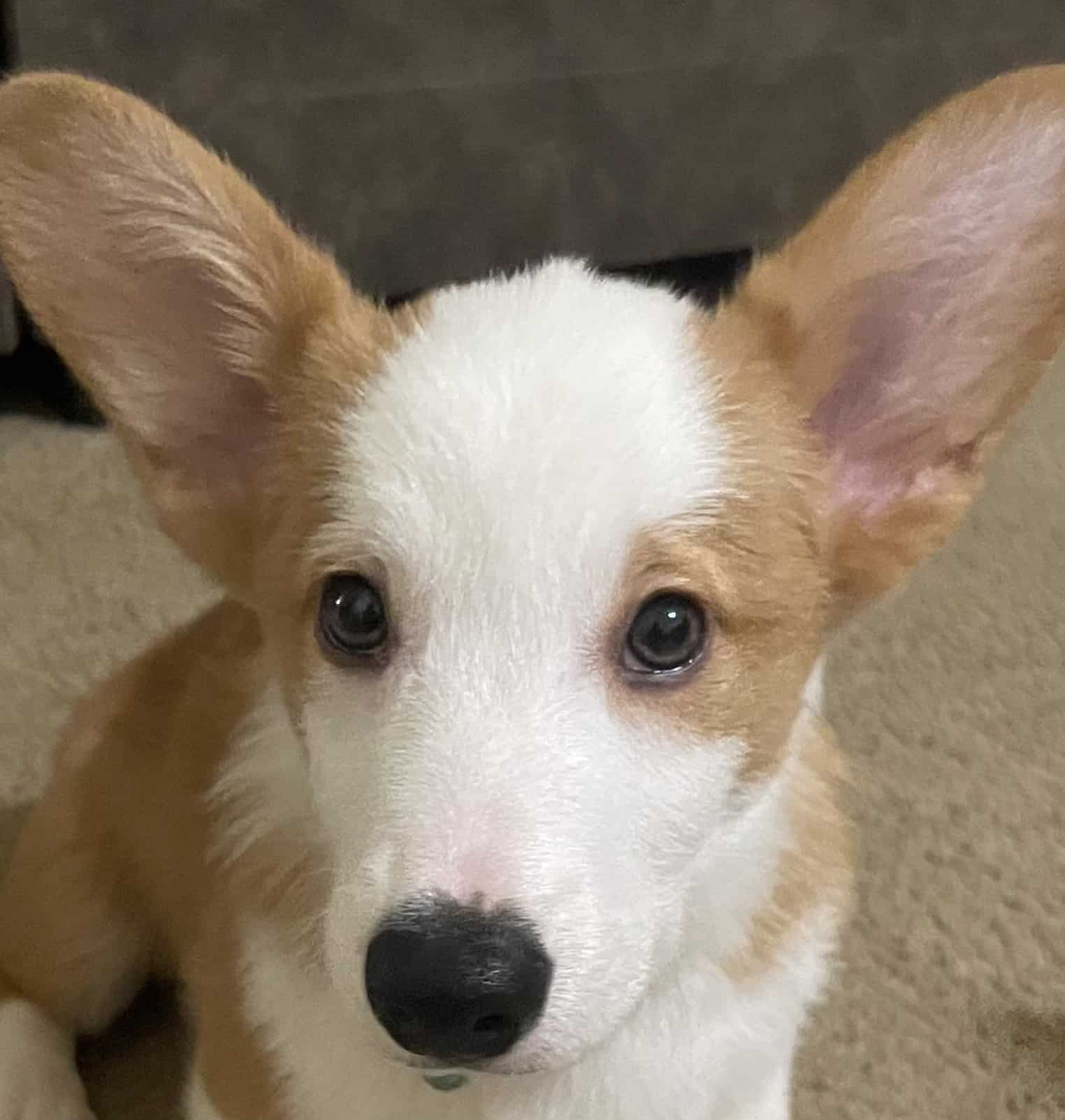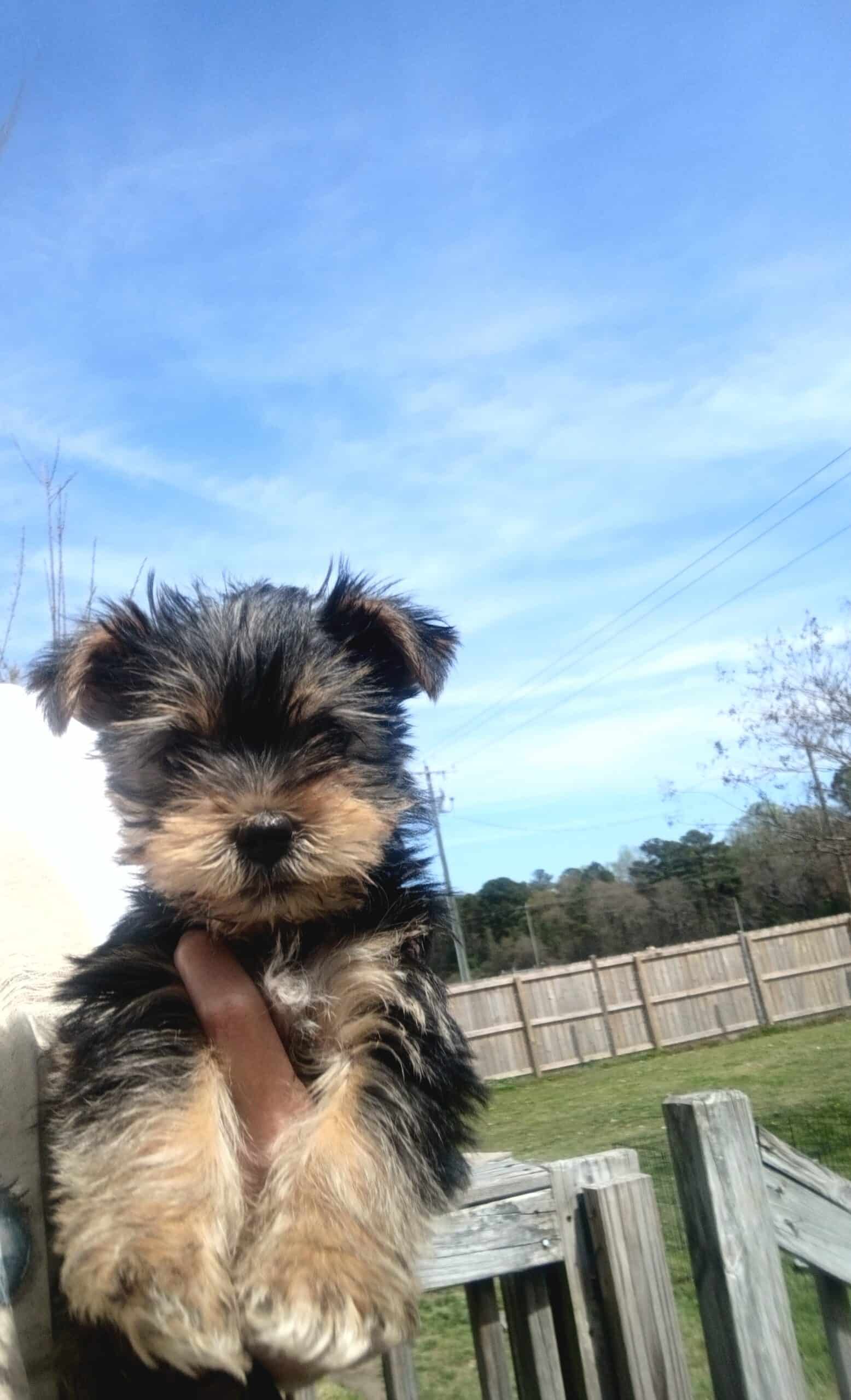What to Know about American Bulldog Puppies for Sale
The American Bulldog for sale is a medium-large breed with an endearing craggy face and an affectionate nature. Confident and somewhat overbearing, American Bulldogs require a lot of exercise and training. They are ideal for families without pets who are active and have time to dedicate to a demanding dog.
Overview of American Bulldog for Sale
History
American Bulldogs originated from Old English Bulldogs around the 1650s or perhaps earlier. These Bulldogs were a type rather than a breed and came from quality working stock out of Europe. Although some were surely bull-baiting dogs, most American Bulldogs were farmworkers in the US. They were excellent catch dogs for cattle and hogs. Later branches developed into guard dogs, border patrols of large properties, butcher’s assistants (drew carts of meat), and feral pig hunters. As of 2021, American Bulldogs have become as versatile as the Pit Bull, still serving as catch dogs for livestock, especially hogs, and driving cattle. More and more, owners are enjoying American Bulldogs for sale as family companions and partners in several canine athletic events. The American Bulldog had been more of a type than a definitive breed until post-World War II when they nearly faced extinction. They finally received AKC acceptance in 2019. The UKC had already recognized the breed and an official standard by 1999.
American Bulldog Types
An American Bulldog for sale is generally a medium-large athletic dog with a distinctive presence and two major different types. The bully type, or Johnson American Bulldog, is shorter, broader, more muscular, and has a shorter and more wrinkled face. The other type is known as standard and has a longer snout and more streamlined longer-legged appearance. There are also a few minor lineages that do not feature in conformation shows.
- Johnson – 23 to 27 inches tall; 80 to 125 pounds
- Scott – 23 to 27 inches tall;
- Painter – fighting dogs; 23 to 25 inches tall; 55 to 80 pounds
- Old Southern – 21 to 26 inches tall; 80 to 97 pounds
American Bulldog Breed Standard
You can see the Old English Bulldog heritage in the heavy wide head with a somewhat shortened broad muzzle. How pronounced the AmBull’s stop depends on the line. The Johnson American Bulldog is a bulkier dog and has a more abrupt stop and shorter muzzle than the lankier Scott American Bulldog. American Bulldogs can have three different types of ears, rose, semi-prick, or flop. Some owners crop their dogs’ ears, the most common lengths being short or medium. A medium ear length, leaving about 70% of the original pinna, is most common for show dogs that do not go natural. American Bulldogs have powerful jaws with a slightly undershot bite and prominent cheekbones. They also have a lot of strength in their neck which is moderately short and thick with a slight dewlap. The legs are muscular with large bones and the chest broad and deep. An American Bulldog has a strong tail that is thick at its base and tapers down its length. Some owners dock their dogs’ tails. Shows prefer natural tails and ears for this breed.
American Bulldog Coat and Colors
An American Bulldog has harsh, dense, short hair with a thin to nonexistent undercoat. They undergo moderate shedding the entire year with possible upticks in the spring and fall. You should be able to distinguish an American Bulldog by its base color of white, according to the AKC. The UKC also allows for solid colors except for black or blue. Neither registry accepts merle, black and tan, or tricolor in the American Bulldog. Other registries such as the FCI do not yet recognize American Bulldogs as a breed. The AKC accepts the following colors:
- Solid white
- White with brindle
- White with brown
- White with tan
- White with black
The UKC differs from the American Kennel Club in that it prefers the red brindle American Bulldog color followed by other shades of brindle. Brindling refers to dark stripes on a lighter background, and the UKC favors uniformity. The AKC likes solid white dogs. White American Bulldogs are the third choice for the UKC. Other acceptable colors are as follows:
- White with blue
- White with black
- Solid fawn ,red, yellow, brown, or tan
- White with tan
- White with yellow
- White with red
- White with chocolate – the recessive brown gene that does not allow any black expression; areas that would otherwise be black are deep liver or chocolate brown
- White with lilac – Lilac represents a double dilution; dilution gene “d’ suppresses the recessive brown gene giving the dog a tawny shade that may look like it has hints of lavender in some dogs
According to the UKC, solid colors can have small patches of white such as on the chest and paws. Solid black American Bulldogs are very undesirable, but no colors except white secondary to albinism eliminate or disqualify a dog from a UKC show. The same applies to black and tan as well as solid blue American Bulldogs. The UKC also accepts all eye colors, including blue, brown, and green. Dark brown is preferable, but the eyes must match regardless of the color. The AKC does not accept any eye color other than brown. Blue-eyed American Bulldogs are rare.
Temperament
American Bulldogs should impress you with their confidence and assertiveness. With the family, they are affectionate and loyal but can be suspicious of strangers. Early socialization is crucial for your dog to discern between friendly guests and threats. A well-socialized American Bulldog is likely to be tolerant and even friendly with your friends. Lack of socialization, like with many other breeds, can produce a shy or vicious dog.
Children
The American Bulldog has a reputation for being great around kids. Again, socialization is key, but American Bulldogs tend to be patient and restrained around children of all ages. Puppies, which are not as self-aware, can be too rambunctious for toddlers. The American Bulldog’s size alone warrants constant supervision with children under the age of 12 years. Also, be wary of your dog around a stranger’s kids.
Other Dogs
Since they are competitive and dominant, American Bulldogs can be belligerent with other dogs. Even the AKC accepts that as a part of the breed’s nature. Unneutered dogs are typically worse than fixed animals, but both sexes commonly exhibit same-gender aggression. You must judge your dog’s behavior towards others individually. With a history of hunting big game, it is not advisable to keep your AmBull with a small dog. The risk of severe injury and death to the smaller animal is too high. Likewise, keeping an American Bulldog with a cat is dubious.
Health
American Bulldogs are large dogs that do not live quite as long as their smaller counterparts. However, the American Bulldog maintains relatively good health with a lifespan of 10 to 13 years.
Scoping Out American Bulldog Puppies for Sale
“American Bulldog puppies for sale near me,” should inspire you to visit your potential new dog in person. You can evaluate their care by observing the cleanliness of the environment and the demeanor of any adult dogs that are present. If you are lucky, you should be able to see one or both parents. Responsible breeders should be able to offer testing results on the parents of a pup you are considering.
- OFA certificates on the hips and elbows
- Eye evaluation – screen for
- Genetic test – Canine Neuronal Ceroid Lipofuscinosis
- Genetic test – Ichthyosis
Ideally, breeders will also avoid using dogs with a cherry eye, eyelids that roll inward or droop outward, and those with improper limb angulation. For example, some American Bulldogs have feet that face outwards and hocks that angle inward during movement.
American Bulldog vs Pitbull
American Bulldogs are often lumped in the same category as breeds similar in appearance. Localities with breed-specific bans, property owners, and insurance underwriters frequently refer to this category as Pitbulls. However, American Bulldogs are quite distinct from any of the others in the group, including the American Pitbull Terrier or official Pitbull. However, be aware that people may introduce American Bulldog into their Pitbull Terrier lines and vice versa, adding to the confusion and the banning of both breeds.
- Size – Pitbull Terrier is 17 to 21 inches tall, weighs
- Temperament – similar but Pitbull can have a higher prey drive, American Bulldog more protective
- Appearance – AmBull has a larger head that is squarer with a shorter nose
- Pitbulls have more color options, more likely to be solid
- Athleticism alike – Pitbulls quicker and more energetic
- Bite force of American Bulldog stronger – 305 PSI vs 235 PSI
- Pitbull Terrier more trainable – #48 working intelligence ranking vs #136/140 of Bulldog; Pitbull also more eager to please
- American Bulldog has deeper and broader chest
- American Bulldog is AKC, Pitbull Terrier is not, although similar American Staffordshire Terrier is
- Lifespan similar – Pitbull Terrier 10 to 14 years
- Development – Pitbull represents a significant modification of the Old English Bulldog to produce a quicker, fiercer, and more agile fighting dog and ratter; American Bulldog sought to preserve both fighting and working abilities of the Old English Bulldog
- Pitbull Terrier more commonly banned; you must check regulations of your locale to make sure your American Bulldog is not illegal
Care
Feeding
If you get an American Bulldog puppy for sale at around eight to twelve weeks old, you will need to feed her four to six meals daily. Between the ages of 12 to 24 weeks, you will still be feeding your puppy three or four times per day. After six months old, your dog can eat two or three meals a day. Puppies often require double or triple the calories of adult dogs, especially during their adolescence. Good quality should always be your goal, whether feeding puppies, adults, or seniors. Animal protein sources and high-quality fats or oils should be among the top named ingredients. Many commercial foods use chelated vitamins and minerals to increase their bioavailability. Carbohydrates remain the most variable components of dog food, taking the form of corn, wheat, rice, potatoes, yams, berries, lentils, or greens. Dogs do not require carbohydrates, but some feel that certain types of produce provide important antioxidants. Your veterinarian can give you guidance on any food you choose, especially if you want to try homemade and raw diets. Make all diet changes gradually over a few days.
Grooming
American Bulldogs do not require much attention to grooming.
- Minimal brushing – weekly brushing removes loose hairs and debris and helps the circulation and health of the skin and coat
- Baths – every 6 to 8 weeks; weekly if your dogs has skin problems secondary to allergies, mange, or external parasites
- Teeth – brush every couple of days
- Wipe face daily – clean around eyes and facial folds if present
- Clip nails every 6 to 8 weeks
- Check ears every other day for excessive wax or any signs of infection which are redness, swelling, or abnormal odor
Exercise
Although American Bulldogs are often content to lead a laidback existence, they ideally should get an hour or more of daily exercise. You should combine mental enrichment with strenuous physical activities and relaxed walking. Despite their athleticism, American Bulldogs are prone to obesity if they do not get sufficient exercise. Your American Bulldog can excel in pulling contests, Schutzhund, lure courses, French ring, and jogging. Remember to be cautious if you have a bully type and it is hot and humid outside. American Bulldogs can suffer from heat exhaustion or heatstroke although they are not as vulnerable as the French and English Bulldogs.
Training
American Bulldog puppies for sale need to start a training program as soon as they get to their new homes. Large, imposing, and sometimes stubborn, American Bulldogs do best with experienced owners. Despite their size and power, you need to keep your cool when training an American Bulldog. She learns fastest with positive reinforcement, well-timed corrections, and repetition. Yet, your persistence cannot become methodical and boring. You can get a huge head start by beginning basic obedience and extensive socialization with a young pup.
